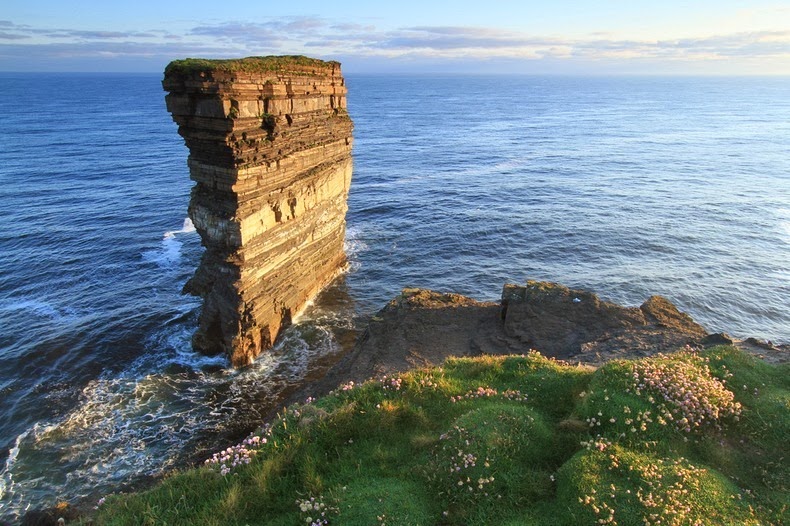About 5 km north of the village of Ballycastle in Mayo county near the Irish coast stands a striking headland called Downpatrick Head. Towering 126 feet above the sea, it offers fantastic views of the Atlantic, the Staggs of Broadhaven to the west, and high cliffs along the shore. The name Downpatrick is derived from a time when St Patrick himself founded a church there. You can still see the ruins of the church building, a stone cross and holy well at the top of Downpatrick Head. This was once a popular pilgrim destination, and today the crowds still gather here on the last Sunday of July – known as Garland Sunday – to hear mass at this sacred site. During the Second World War a coastguard watch-house was constructed here which is now used to view the many species of birds that visit the high cliffs.

Cutoff from the mainland and lying 80 meters from the shore is a dramatic sea stack known as Dun Briste or “the broken fort”. The sea stack got separated from the mainland in 1393 as a result of high seas, and the people living on the cliffs had to be rescued using ships’ ropes. The sea stack is beautiful to behold because you can see the layers upon layers of multi-coloured rock strata. Dun Briste is roughly 63 meter by 23 meters, and 45 meters high.
The cliffs in the area, including the stack, were formed in the Lower Carboniferous period, a geological term applied to a time about 350 million years ago, when the sea temperatures around Ireland were much higher than today. Local folklore tells a different story though. The legend says that a pagan chieftain once lived on the spot where the stack now stands. When he refused to convert to Christianity, St Patrick struck the ground with his crozier, splitting a chunk of the headland off into the ocean, with the chieftain on top.
Each year, Downpatrick is frequented by birdwatchers who come to observe and record the many different species which take up positions on the stratified face of the stack as the seasons change. In May and early June, the headland itself is a blaze of colour when the sea-pink comes into bloom.










0 comments:
Post a Comment